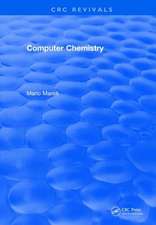DNA Nanotechnology for Cell Research – From Bioanalysis to Biomedicine
Autor Z Nieen Limba Engleză Hardback – 19 mar 2024
Preț: 953.42 lei
Preț vechi: 1238.21 lei
-23% Nou
Puncte Express: 1430
Preț estimativ în valută:
182.44€ • 195.09$ • 152.11£
182.44€ • 195.09$ • 152.11£
Carte disponibilă
Livrare economică 24-29 martie
Livrare express 12-18 martie pentru 91.18 lei
Preluare comenzi: 021 569.72.76
Specificații
ISBN-13: 9783527351732
ISBN-10: 3527351736
Pagini: 544
Dimensiuni: 179 x 244 x 35 mm
Greutate: 1.19 kg
Editura: Wiley Vch
Locul publicării:Weinheim, Germany
ISBN-10: 3527351736
Pagini: 544
Dimensiuni: 179 x 244 x 35 mm
Greutate: 1.19 kg
Editura: Wiley Vch
Locul publicării:Weinheim, Germany
Cuprins
Preface PART I. DNA Nanotechnology for Cellular Recognition (Cell SELEX, cell surface engineering) 1. DEVELOPING DNA APTAMER TOOLBOX FOR CELL RESEARCH 1.1 Cells and their complexity 1.2 DNA aptamers' characteristics and advantages 1.3 On-demand synthesis and screening of DNA aptamers 1.4 Toward a toolbox of DNA aptamers for cellular applications 1.5 Summary and Outlook 2. BACTERIAL DETECTION WITH FUNCTIONAL NUCLEIC ACIDS: ESCHERICHIA COLI AS A CASE STUDY 2.1 General Introduction on Bacteria 2.2 E. coli 2.3 Conventional Methods for General E. coli Detection 2.4 Biosensors for E. coli Detection 2.5 Conclusion 3. FROM LIGAND-BINDING APTAMERS TO MOLECULAR SWITCHES 3.1 Aptamers can be generated by SELEX 3.2 Various subtypes of SELEX have been invented 3.3 Riboswitches are natural RNA aptamers carrying expression platforms 3.4 Riboswitches use various mechanisms to regulate gene expression 3.5 Riboswitches are potential drug targets 3.6 Fusing aptamer with expression platform to construct artificial RNA switches 3.7 Conclusions 4. DNA NANOTECHNOLOGY-BASED MICROFLUIDICS FOR LIQUID BIOPSY 4.1 Introduction 4.2 DNA nanotechnology-based microfluidics for isolation of circulating targets 4.3 DNA nanotechnology-based microfluidics for release and detection of circulating targets 4.4 DNA-assisted microfluidics for single cell/vesicle analysis 4.5 Summary and Outlook 5. SPATIOTEMPORAL CONTROLLED CELL MEMBRANE ENGINEERING USING DNA NANOTECHNOLOGY 5.1 Background 5.2 DNA Modifications on the External Cell Membrane Surface 5.4 Perspectives PART II. DNA Nanotechnology for Cell Imaging and Intracellular Sensing 6. METAL-DEPENDENT DNAZYMES FOR CELL SURFACE ENGINEERING AND INTRACELLULAR BIOIMAGING 6.1 Cellular Surface Engineering and Intracellular Bioimaging Show Great Potential in Biological and Medical Research 6.2 Metal-Specific DNAzymes: a Suitable Choice for Artificial Manipulation of Living Cells 6.3 Cell Surface Engineering by Programmable DNAzymes 6.4 Intracellular Imaging of Metal Ions with DNAzyme-Based Biosensors 6.5 Conclusion 7. DNA NANOMOTORS FOR BIOIMAGING IN LIVING CELLS 8. ILLUMINATING RNA IN LIVE CELLS WITH INORGANIC NANOPARTICLES-BASED DNA SENSOR TECHNOLOGY 8.1 RNA Detection and Imaging 8.2 RNA Imaging Based on Direct Hybridization 8.3 RNA Imaging Based on Strand Displacement Reactions 8.4 Signal-amplified RNA Imaging 8.5 Spatiotemporally Controlled RNA Imaging in Live Cells 8.6 Conclusion 9. BUILDING DNA COMPUTING SYSTEM FOR SMART BIOSENSING AND CLINICAL DIAGNOSIS 9.1 DNA computing 9.2 DNA-based computing devices for biosensing 9.3 DNA computing for clinical diagnosis 9.4 Conclusion 10. INTELLIGENT SENSE-ON-DEMAND DNA CIRCUITS FOR AMPLIFIED BIOIMAGING IN LIVING CELLS 10.1 DNA Circuit: The Promising Technique for Bioimaging 10.2 Non-enzymatic DNA Circuits 10.3 Intelligent Integrated DNA Circuits for Amplified Bioimaging 10.4 Stimuli-responsive DNA Circuits for Reliable Bioimaging 10.5 Conclusion and Perspectives 11. DNA NANOSCAFFOLDS FOR BIOMACROMOLECULES ORGANIZATION AND BIOIMAGING APPLICATIONS 11.1 Introduction 11.2 Assembly of DNA-scaffolded biomacromolecules 11.3 Application of DNA nanoscaffold for regulation of enzyme cascade reaction 11.4 DNA nanostructures empowered bioimaging technologies 11.5 Summary and outlook PART III. DNA Nanotechnology for Regulation of Cellular Functions 12. ADOPTING NUCLEIC ACID NANOTECHNOLOGY FOR GENETIC REGULATION IN VIVO 12.1 Introduction 12.2 Toehold-mediated strand displacement: switching nucleic acids with nucleic acids 12.3 Toehold riboregulators and related systems 12.4 Applying nucleic acid nanotechnology to CRISPR and RNA interference 12.5 Delivery of nucleic acid devices, in vivo production, and challenges for in vivo operation 12.6 Conclusion & Outlook 13. CELL MEMBRANE FUNCTIONALIZATION VIA NUCLEIC ACID TOOLS FOR VISUALIZATION AND REGULATION OF CELLULAR RECEPTORS 13.1 Nucleic Acid-based Functionalization Strategies: From Receptor Information to DNA Probes 13.2 Uncovering Molecular Information of Cellular Receptors 13.3 Governing Cellular Receptors-Mediated Signal Transduction 13.4 Conclusion 14. HARNESSING DNA NANOTECHNOLOGY FOR NON-GENETIC MANIPULATION AND FUNCTIONALIZATION OF CELL SURFACE RECEPTOR 14.1 Introduction 14.2 Principle of DNA-enabled molecular engineering for receptor regulation 14.3 DNA nanodevices for programming receptor function 14.4 Elaborate and intelligent DNA nanodevices reprogramming receptor function 14.5 Conclusions and perspectives 15. DNA-BASED CELL SURFACE ENGINEERING FOR PROGRAMMING MULTIPLE CELL-CELL INTERACTIONS 15.1 DNA Nanotechnology: The Tool of Choice for Programming Cell-Cell Interactions 15.2 Modifying Cell Surface with DNA 15.3 Programming Cell-Cell Interactions by DNA Nanotechnology 15.4 Conclusion 16. DESIGNER DNA NANOSTRUCTURES AND THEIR CELLULAR UPTAKE BEHAVIORS 16.1 Introduction 16.2 DNA Nanotechnology 16.3 Pathways of Cell Endocytosis 16.4 Analysis of DNA Nanostructures' Cellular Uptake behaviors PART IV. DNA Nanotechnology for Cell-Targeted Medical Applications 17. TOWARDS PRODUCTION OF NUCLEIC ACID NANOSTRUCTURES IN LIFE CELLS AND THEIR BIOMEDICAL APPLICATIONS 17.1 DNA Nanostructures 17.2 RNA Nanostructures 17.3 Applications 17.4 Conclusion 18. ENGINEERING NUCLEIC ACID STRUCTURES FOR PROGRAMMABLE INTRACELLULAR BIOCOMPUTATION 19. DNA SUPRAMOLECULAR HYDROGELS FOR BIOMEDICAL APPLICATIONS 19.1 Introduction 19.2 Classification and Preparation of DNA supramolecular hydrogels 19.3 Biomedical application of DNA supramolecular hydrogels 19.4 Conclusions and perspectives 20. ROLLING CIRCLE AMPLIFICATION-BASED DNA-NANOTECHNOLOGY FOR CELL RESEARCH 20.1 Introduction 20.2 Principle and synthetic methods of RCA 20.3 RCA-based DNA nanotechnology for cell separation 20.4 RCA-based DNA nanotechnology for nucleic acid drug delivery 20.5 Conclusion 21. PRECISE INTEGRATION OF THERAPEUTICS IN DNA-BASED NANOMATERIAL FOR CANCER TREATMENTS 21.1 DNA-based nanomaterials in biomedicines 21.2 Strategies on constructing DNA-based DDSs 21.3 Precise integration of therapeutics into DNA-based DDSs to achieve synergistic cancer treatment
















